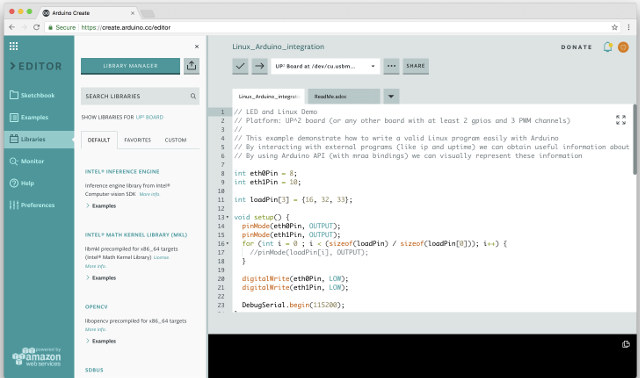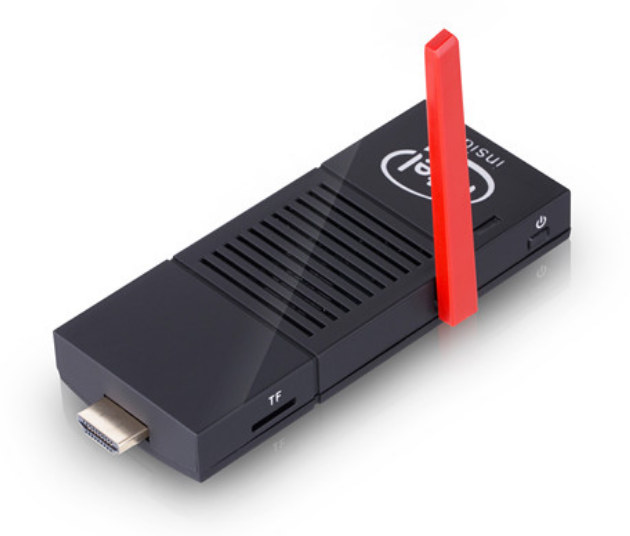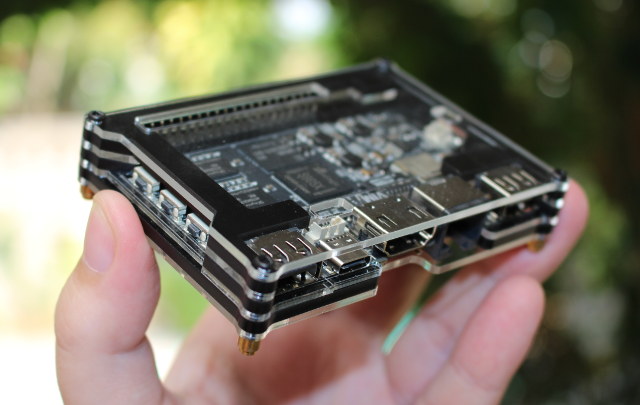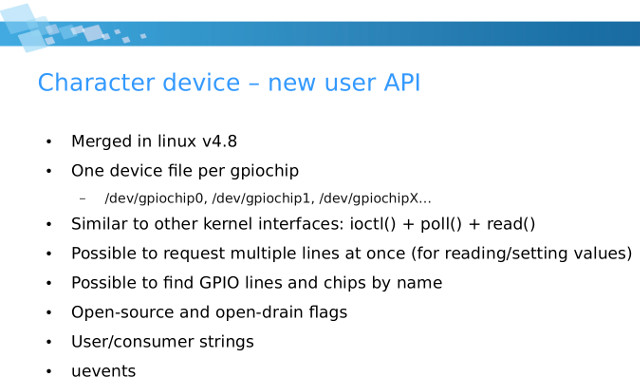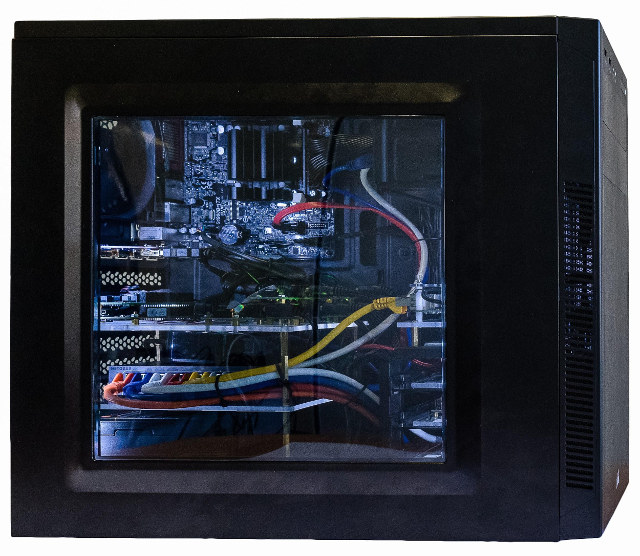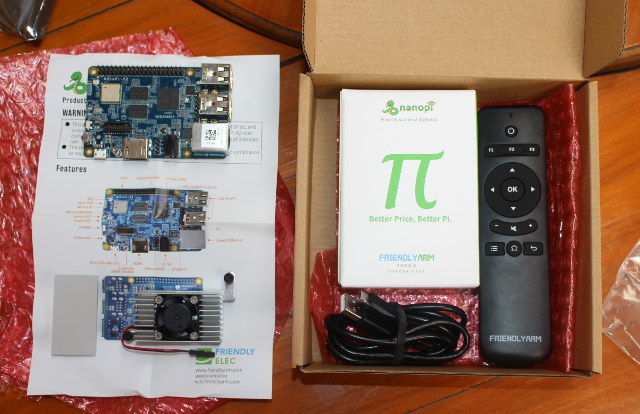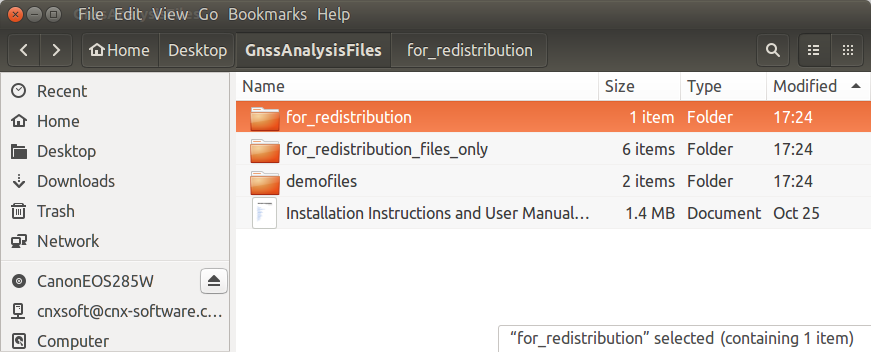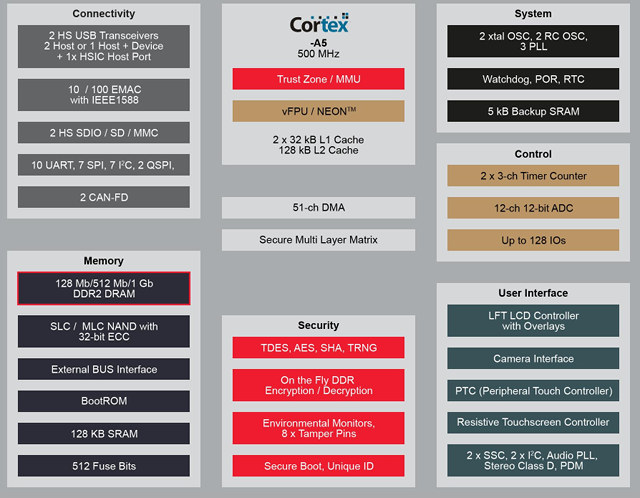Most people are used to program Arduino compatible boards with the Arduino IDE that they’ve installed in their Windows/Linux/Mac OS computer, and manage everything locally. But Arduino introduced Arduino Create last year, which includes Arduino Web Editor allowing you to perform the same tasks in your web browser, and save your files in the cloud. The company has now added Linux support to Arduino Create so that users can now program their Linux devices as if they were regular Arduino boards, and easily deploy IoT applications with integrated cloud services. The initial release has been sponsored by Intel, and currently supports X86/X86_64 boards, but other hardware architectures will be supported in the coming month. In the meantime, AAEON UP2 board is the best platform to get started, as a complete getting started guide is available for the platform. But other mini PCs such as Intel NUC, Dell Wyse, Gigabyte GB-BXT are […]
$100 CA98 TV Stick is Powered by Intel Celeron N3350 Processor
We’ve already seen Apollo Lake TV sticks such as MeegoPad T11, ECDREAM A9, or BBen MN10. Linuxium reviewed ECDREAM A9 model on this blog, and found out that Windows 10 (pre-installed), and Ubuntu 17.04 operating systems ran reasonably well with two main downsides: the relatively slow eMMC flash, and the noisy fan. Another issue is the size, as with 58mm width, it looks more an hybrid between a mini PC and a TV stick, than an actual TV stick. Another Apollo Lake TV/PC stick is now available with CA98 (aka CSA98) found on Aliexpress for $100, as well as on Shenzhen Indo Technology’s Alibaba page. CA98 specifications: SoC – Intel Celeron N3350 dual core processor @ 1.1 GHz / 2.4 GHz, 12 EU Intel HD graphics 500 @ 200 MHz / 650 MHz; 6W TDP System Memory – 2GB LPDDR3 Storage – 32GB eMMC flash (optional 16, 64 or 128GB) […]
Giveaway Week – Khadas Vim Pro Development Board
For the final day of this giveaway week, I’ll send Khadas Vim Pro development board to a new home. The board is powered by an Amlogic S905X processor coupled with 2GB RAM and 16GB storage, features 10/100M Ethernet and 802.11ac WiFi, and support 4K video playback and output via its HDMI 2.0a port. The board supports various operating systems such as Android, LibreELEC, dual boot Android/Ubuntu, etc.. and I wrote a Ubuntu review / getting started guide for the board in February. At the time, the image was still “raw” with many steps to perform by the users, and part of the documentation needing to be worked on. But the company (Szwesion) and members of the community are usually active in resolving user issues on the forums. I’ll give away the kit I’ve received with the board in an acrylic case, a USB to USB type C cable for power, […]
Learn More About Linux’s New GPIO User Space Subsystem & Libgpiod
Sysfs was used to control GPIOs on Linux system with the GPIOs defined in /sys/class/gpio, but starting with Linux 4.8, a new GPIO interface for user space was introduced, with gpiochip becoming char devices foudn in /dev/gpiochip0, dev/gpiochip1, etc.. , and sysfs allegedly become deprecated. But a quick check in NanoPi Duo with Linux 4.11 shows both GPIO user space interfaces appear to be enabled:
|
1 2 3 4 |
ls /sys/class/gpio/ export gpiochip0 gpiochip352 unexport ls /dev/gpiochip gpiochip0 gpiochip1 |
Nevertheless overtime, sysfs will die out, and the new subsystem will likely be used by all systems, so it might be useful to learn more about it. One way to do that is to watch Bartosz Golaszewski’s ELCE 2017 talk entitled “New GPIO Interface for User Space” with the video embedded below. But I first I’ll summarize some of the key points. Now GPIO handling from user space becomes similar to other char driver with ioctl, poll and read functions, and beside assigning numbers […]
Lab in a Box Concept Embeds x86 Server and 6 ARM Boards into a PC Case for Automated Software Testing
The Linux kernel now has about 20 millions line of code, Arm has hundreds of licensees making thousands of processors and micro-controllers, which end up in maybe hundreds of thousands of different designs, many of which are not using Linux, but for those that do, Linux must be tested to make sure it works. The same stands true for any large software used on multiple hardware platforms. Manual testing is one way to do it, but it’s time consuming and expensive, so there are software and hardware continuous integration solutions to automate testing such as Linaro LAVA (Linaro Automated Validation Architecture), KernelCI automated Linux kernel testing, and Automotive Grade Linux CIAT that automatically test incoming patch series. Both CIAT and KernelCI focus on Linux, and rely on LAVA, with KernelCI leveraging hardware contributed by the community, and proven to be effective as since it’s been implemented, failed build configs dropped […]
Giveaway Week – NanoPi K2 Development Board
NanoPi K2 development board is powered by Amlogic S905 processor coupled with 2GB RAM, and follows Raspberry Pi 3 form factor, and I’ve got a K2 multimedia kit to give away courtesy of FriendlyELEC who sent me one a few months ago. The kit includes the board, a quick start guide, a fansink, a USB cable for power, an acrylic case (not shown above), and an IR remote control. I got it when I asked for NanoPi NAS Kit, and sadly I did not find the time to test it, but the company provides both Android 5.1 and Ubuntu 16.04.2 images for the board, and Armbian also released an experimental Ubuntu server image with mainline kernel, and an Ubuntu desktop “testing” image with legacy Linux. To enter the draw simply leave a comment below. Other rules are as follows: Only one entry per contest. I will filter out entries with […]
Testing Google’s GNSS Analysis Tool for GPS, GLONASS, Galileo, Beidou…
Google has recently released GNSS Analysis Tool to process and analyze Global Navigation Satellite System (GNSS) raw measurements from Android devices. This is mostly designed to enable manufacturers to see whether their GNSS receivers are working as expected. The tool can also be used for research and to learn more about GNSS, and there are two components: GNSS Analysis tool itself available for Windows, Linux, or Mac OS X GNSS Data Logger app working with Android 7.0 or greater phones that support raw measurements. You can download both from the release page on Github. I’ve given it a try with a computer running Ubuntu 16.04 and Xiaomi Mi A1 smartphone, but you can the analysis tool even f you don’t have Android 7.0+ smartphone, as sample data is included. I downloaded GnssAnalysisLinuxV2.4.0.0.zip, and extracted the content in ~/Desktop/GnnsAnalysisFiles directory as instructed. Now we can open a terminal window and install […]
SAMA5D2 Based SiPs Combine ARM Cortex-A5 Processor With Up to 128MB DDR2
Atmel SAMA5D2 ARM Cortex-A5 processor was released about two years ago with extended temperature range and lower power consumption compared to previous SAMAD5 processors, with the new SoC still targeting industrial Internet of Things (IIoT), wearables and point of sale applications. In recent years, we’ve seen companies packing main components into systems-in-package (SiP) with products such as Octavo Systems OSD3358 and Espressif Systems ESP32-PICO-D4 with integrate an existing processor with memory, storage, and/or PMIC. Microchip (previously Atmel) has now done the same for their SAMA5D2 processors with SiPs combining the Cortex A5 SoC with DDR2 memory. Four SAMA5D2 SiPs have been launched: ATSAMA5D225C-D1M based on ATSAMA5D22C MPU with extra SD/SDIO, QSPI, FLEXCOMs (2x), I2S, and timers (2x) and: 128 Mb (16 MB) DDR2 DRAM 90 Peripheral I/Os 196 BGA Package Designed for RTOS/bare metal development ATSAMA5D27C-D5M based on ATSAMA5D27C MPU with: 512 Mb (64 MB) DDR2 DRAM 128 Peripheral I/Os […]


